Your cart is currently empty!

HARI Official Brand Site

Caretakers are encouraged to continue this desensitization to ensure the education is not lost. Furthermore this will enable all that provide daily care for this bird to be proactive in recognizing physical characteristics that may reveal a medical concern requiring veterinarian attention.
Whether chicks are parent reared or cared for in a nursery by a caretaker, desensitization to the physical exam can be carefully implemented throughout the physical health assessment inspection of the chicks. As the chicks mature through the fledgling age, further desensitization will ensure the birds are more accustomed to the handling techniques utilized to visually assess physical characteristics that are generally included in the complete physical exam that will be performed by an experienced avian veterinarian.
If chicks are parent reared, parental history and behavior towards handling of their chicks will need to be evaluated prior to any intervention with their chicks and close monitoring thereafter. Health assessments of the chicks are usually performed near the nest and we at HARI allow the parents to see the chicks while they are being monitored for health, weighed or banded and then replaced for continued parental rearing. Re-homed birds with questionable history or individuals that have matured without this education can still be desensitized, through mentorship & play.
Caretakers are encouraged to continue this desensitization to ensure the education is not lost. Furthermore this will enable all that provide daily care for this bird to be proactive in recognizing physical characteristics that may reveal a medical concern requiring veterinarian attention. Routine veterinarian exams will also be a far less stressful event!
The video segment is a brief overview of how these primary lessons for Desensitization to the Physical Exam are implemented at the HARI facility.

As the nursery caretaker performs a daily head to toe health check with desensitization methods, the chick will quickly learn that a little light used to check his choanal papillae and a touch to areas normally considered off limits in older parrots such as under the wing and foot inspection, is nothing to make a fuss about. This mastered lesson will be most valuable throughout the chick’s life regardless of who is checking, as this inspection will give indication of nutrient assimilation and provide an opportunity for general health check by his future avian caretaker and confirmed by the avian veterinarian during the routine visits.
In this photo, an appropriate technique is being used to desensitize the chick to inspection of the choanal region. The inspection should be gentle and not forceful, applying light pressure to the upper or lower mandible. Gently scratching the feathers around the ears will usually trigger a yawning response from the chicks, which can facilitate the inspection of the choanal region and oral cavity
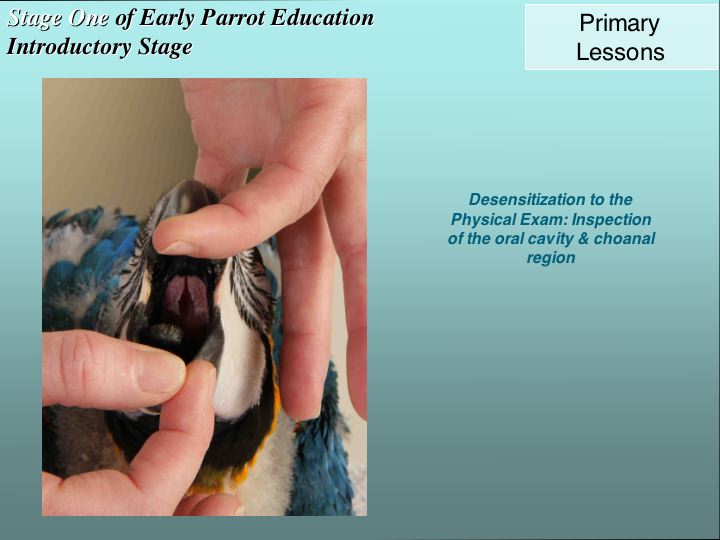
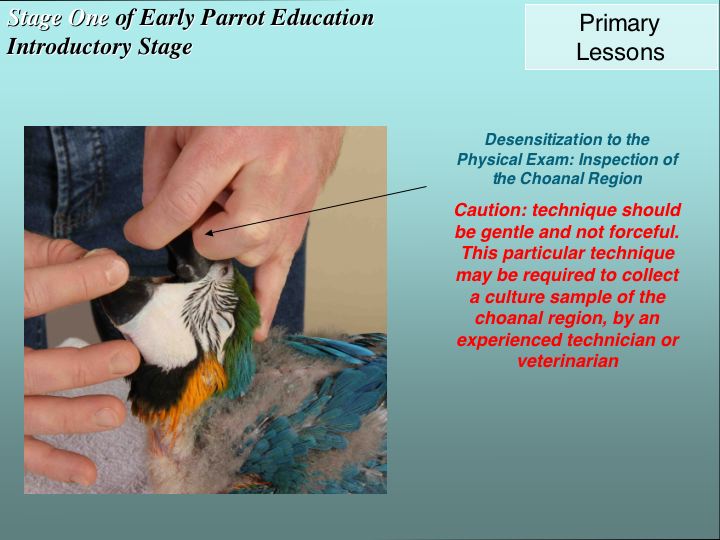
Contrary to the technique demonstrated in the prior slide, this technique is too forceful for desensitization purposes and visual inspection on the choanal region and oral cavity. It may be necessary to remove substrate that may have regrettably been inadvertently ingested when it is still visible in the oral cavity, or be used by an avian health professional to collect a choanal swab, but should not be used by an inexperienced caretaker for the mere routine inspection and desensitization purpose
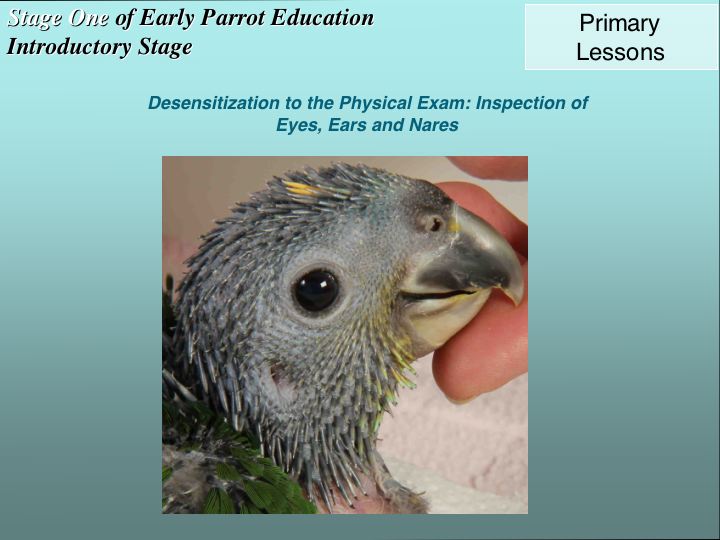
The use of a stethoscope applied to various parts of the body especially where air sacs are located can both desensitize the chick to this procedure and also familiarize the nursery caretaker to recognizing normal and abnormal sounds. The avian veterinarian can also play a crucial role in educating the aviculturist to be able to recognize potentially abnormal respiratory sounds associated with health concerns that would need their immediate expertise for a professional evaluation.
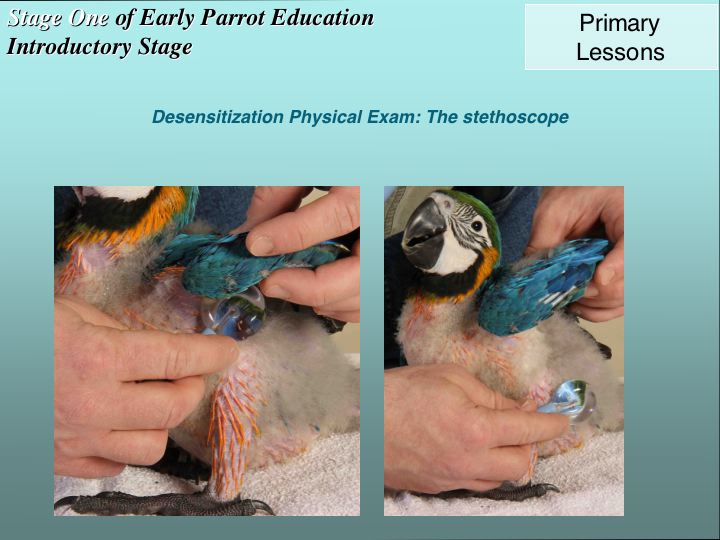
The inspection of the oral cavity and choanal region will continue throughout the fledgling age. AT this particular stage the growth of healthy choanal papillae can be seen if the birds have received an optimal diet.
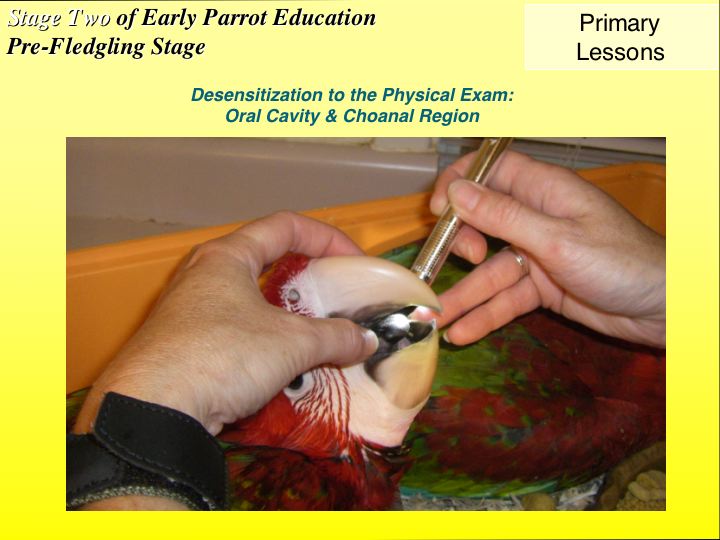
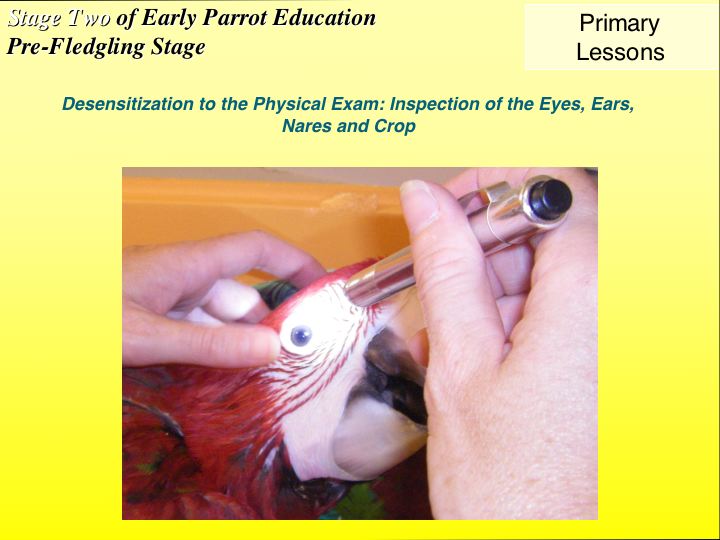
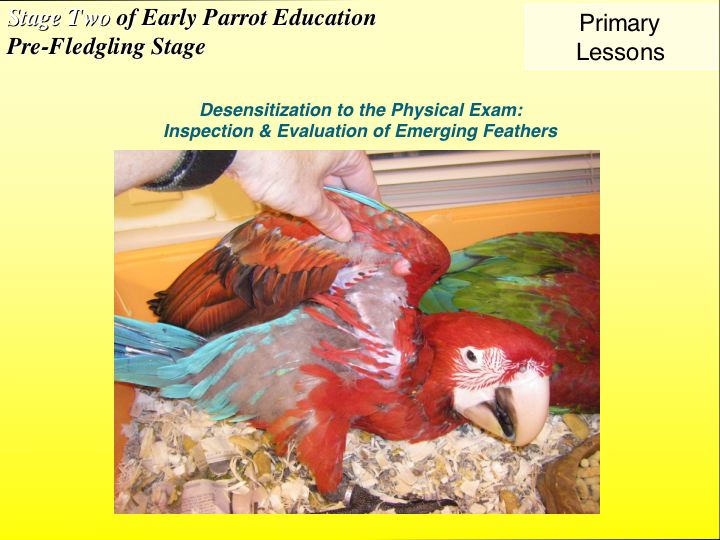
Towel cradling exercises are more advanced at this stage as the fledgling crop has started to regress, and so it can be gently rolled from side to side while be towel cradled. This is a fundamental primary lessons that goes hand in hand with the physical exam lessons, as the use of the towel will allow for future medical interventions when the fledgling matures.
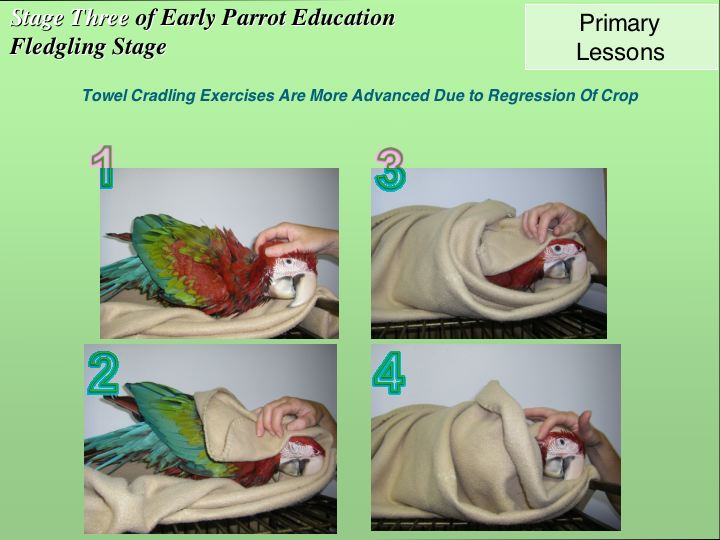
The fledgling is in the greatest window of opportunity at this stage as it has now gained motor skills, confidence, playfulness and a sense of what is expected from him as part of a flock member. The mentorship is most valuable to ensure the physical exam is enjoyable and the participation is rewarded by (vocal and facial expressions) praise. Remaining close to the flock mates is best at this age as the young fledgling still requires their presence to feel safe
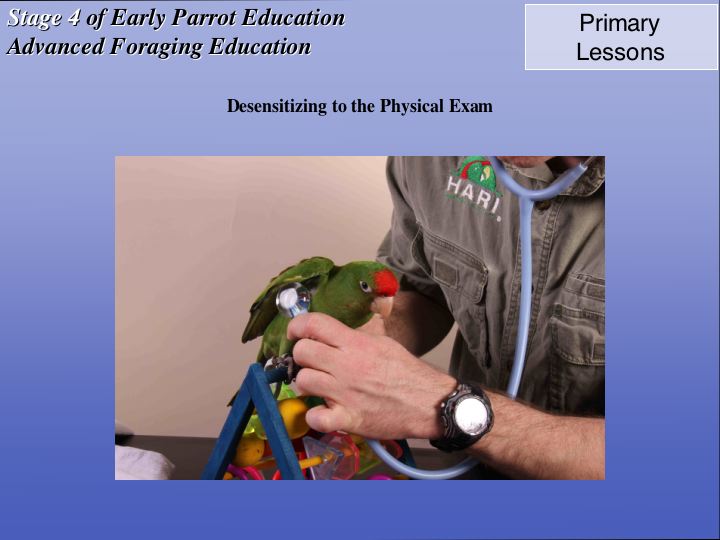
At this stage the fledgling has had the opportunity to develop healthy pectoral muscle and flight skills. It is often at this educational stage that the bird will soon depart the nursery for its new adoptive home and flock. It has now developed more assurance and personality and must still continue to be desensitized to various physical exam procedures that require towel restraint. These techniques are always performed with respect, gentleness, play and mentorship to ensure the experience will remain a positive one.
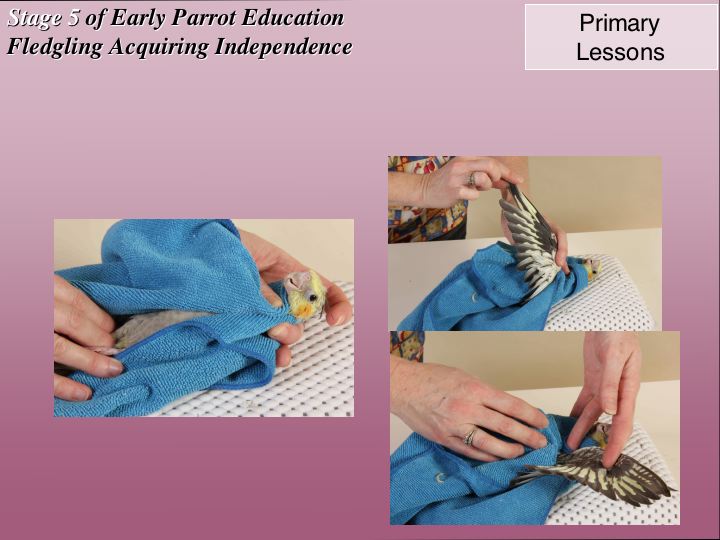
The fledgling is now completely desensitized to the physical exam and ready for the “new bird exam” that will be performed by an avian veterinarian
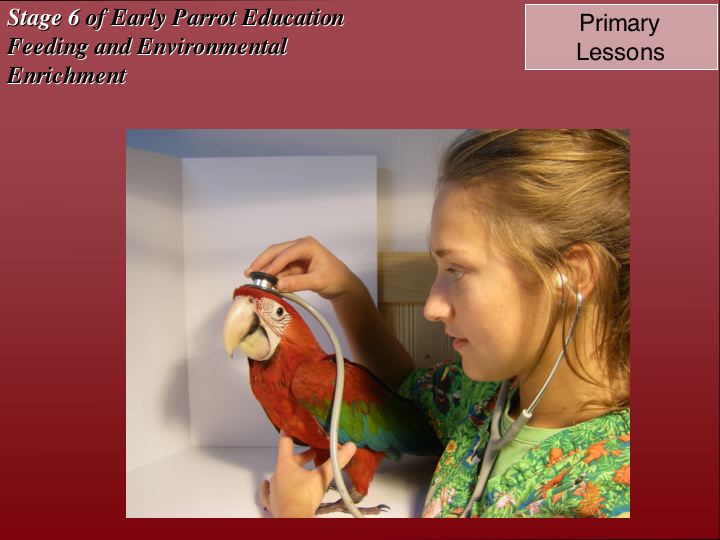
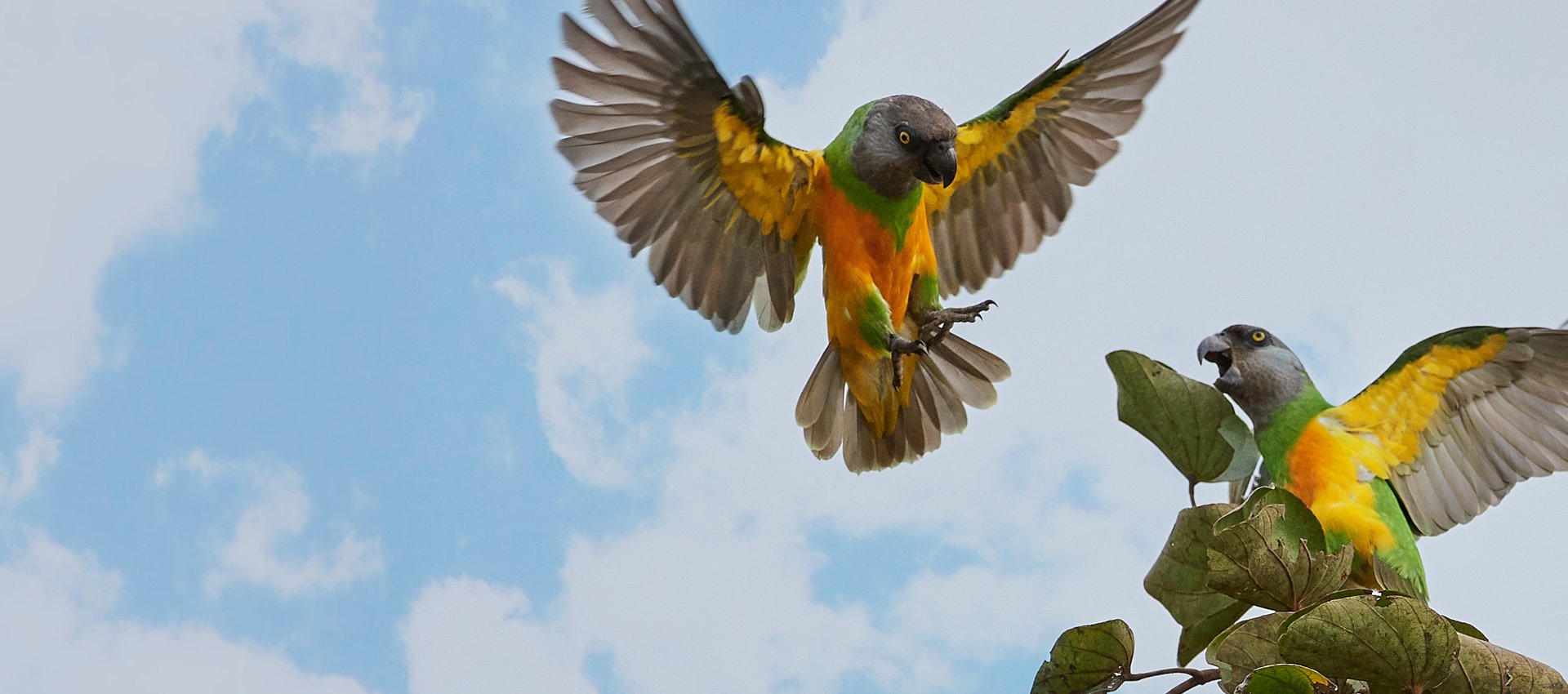
Explore our list of commonly asked questions from fellow parrot owners just like yourself